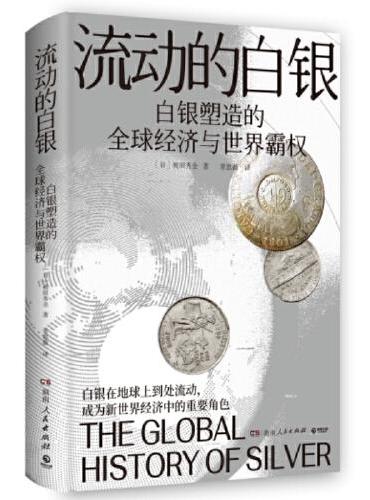新書推薦:

《
没有明天的我们,在昨天相恋
》
售價:HK$
47.1

《
流动的白银(一部由白银打开的人类文明发展史)
》
售價:HK$
63.8

《
饮食的谬误:别让那些流行饮食法害了你
》
售價:HK$
63.8

《
三千年系列:文治三千年+武治三千年+兵器三千年
》
售價:HK$
197.3

《
甲骨文常用字字典(精) 新版
》
售價:HK$
74.8

《
赖世雄经典英语语法:2025全新修订版(赖老师经典外语教材,老版《赖氏经典英语语法》超32000条读者好评!)
》
售價:HK$
65.8

《
影神图 精装版
》
售價:HK$
140.8

《
不止于判断:判断与决策学的发展史、方法学及判断理论
》
售價:HK$
74.8
|
| 內容簡介: |
|
本书包括绪论、物质结构基础、元素及无机化合物、溶液化学、有机物和反应、高分子、生物大分子基础等主要内容。本书的侧重点是环境学科中的基础化学知识,侧重基本原理,并注重理论联系实际,整体具有较好的实用性和可读性。
|
| 目錄:
|
1 Introduction ( 1 )
1.1 Chemistry and Its Branches ( 1 )
1.2 Chemistry and Environment ( 1 )
1.3 Objective and Requirements ( 4 )
1.4 Study Plan ( 5 )
1.5 Literatures ( 7 )
2 Basics of Matter Structure ( 12 )
2.1 Basic Concept of Atomic Structure ( 12 )
2.1.1 Lights and Waves ( 12 )
2.1.2 Quantum Numbers and Atomic Orbitals ( 14 )
2.2 Electron Configurations and Periodicity ( 20 )
2.2.1 Configurations and the Pauli Exclusion Principle ( 21 )
2.2.2 Building-Up Principle and the Periodic Table ( 23 )
2.2.3 Orbital Diagrams of Atoms: Hund′s Rule ( 31 )
2.2.4 Some Periodic Properties ( 33 )
2.3 Chemical Bonds and Intermolecular Forces ( 43 )
2.3.1 Ionic Bonds ( 43 )
2.3.2 Covalent Bonds ( 43 )
2.3.3 Bonding in Metals( 46 )
2.3.4 Hybrid Orbitals ( 50 )
2.3.5 Molecular Orbital Theory( 58 )
2.3.6 Covalent Bonding Parameters( 60 )
2.3.7 Polarity of Bonds ( 60 )
2.3.8 Polarity of Molecules ( 61 )
2.3.9 Intermolecular Forces ( 62 )
2.4 Crystal Structure ( 68 )
3.1.2 Sodium and Potassium and Their Compounds ( 76 )
3.1.3 ROH Theory ( 78 )
3.1.4 Potassium and Potassium Compounds ( 80 )
3.2 Group ⅡA: The Alkaline Earth Metals ( 81 )
3.2.1 Magnesium ( 82 )
3.2.2 Calcium ( 85 )
3.2.3 The Particularity and Diagonal Rule of Lithium and Beryllium ( 86 )
3.3 Group ⅢA Elements ( 87 )
3.3.1 Aluminum Element ( 88 )
3.3.2 Aluminum Compounds ( 90 )
3.4 Hydrogen ( 93 )
3.5 Group ⅣA: The Carbon Family ( 93 )
3.5.1 Allotrope ( 93 )
3.5.2 Silicon ( 94 )
3.5.3 Tin and Lead ( 95 )
3.6 Group ⅤA: Nitrogen and the Phosphorus Family ( 98 )
3.6.1 Nitrogen and Its Important Compounds ( 98 )
3.6.2 Phosphorus and Its Important Compounds (101)
3.7 Group ⅥA: Oxygen and the Sulfur Family u56256 .? (103)
3.7.1 Oxygen and Its Compounds (103)
3.7.2 Surfer and Its Compounds (106)
3.8 Group ⅦA: The Halogens (109)
3.8.1 Halogens and Their Compounds (109)
3.8.2 Ion Polarization Theory (113)
3.9 The Transition Elements (115)
3.9.1 Chromium and Its Compounds (115)
3.9.2 Some Important Manganese Compounds (116)
3.9.3 Iron Series Elements (118)
3.9.4 Region ds Elements (120)
3.10 Group ⅧA: The N0ble Gases (122)
3.11 Coordination Compounds (124)
3.11.1 Concepts of Coordination Compounds (124)
3.11.2 Writing and N0menclature of Coordination Compounds (129)
3.11.3 The Chemical Bond Theory of Coordination Compounds Structure (131)
3.11.4 Conditions for the Formation of Coordination Bonds (132 )
3.11.5 Advantages and Disadvantages of Valence Bond Theory (134)
3.11.6 Applications of Coordination Chemistry (134)
Chapter 4 Solution Chemistry (139)
4.1 General Properties of Solution (139)
4.1.1 Ways of Expressing Concentration (139)
4.1.2 Vapor Pressure of a Solution (142)
4.1.3 Boiling-Point Elevation and Freezing-Point Depression (145)
4.1.4 Osmosis (149)
4.2 Acid-Base Concepts (154)
4.2.1 Brief Introduction of Acid-Base Theory (154)
4.2.2 Acid-Base Dissociation Equilibrium (157)
4.2.3 Distribution of Acid-Base Forms in Different pH Solutions (159)
4.2.4 Calculation of pH of Acid and Alkali Solution (162)
4.2.5 Buffer Solution and Its Application (169)
4.2.6 Acidity and Alkalinity in Water Environment (176)
4.2.7 Experimental Determination of pH Value of Solution (176)
4.3 Dissociation Equilibrium of Complex Ions (177)
4.3.1 Stability Constants of Complexes (177)
4.3.2 Factors Affecting the Stability of Complexes in Solution (178)
4.4 Polyphase Ionic Equilibrium of the Insoluble Electrolyte (181)
4.4.1 Solubility of Solid Matter (181)
4.4.2 Precipitation and Dissolution Balance of Insoluble Electrolyte (181)
4.4.3 Equilibrium Constant of Precipitation Dissolution-Solubility
Product (182)
4.4.4 Factors Affecting the Equilibrium of Precipitation Dissolution (183)
4.4.5 Solubility Product Rule (183)
4.4.6 Application of Precipitation Reaction (184)
4.5 Water Purification and Wastewater Treatment (186)
4.5.1 Coagulation and Flocculation (187)
4.5.2 Activated Sludge Process (189)
4.5.3 Biofilm Process (193)
4.5.4 Membrane Bioreactor u56256 .? (194)
4.5.5 Filtration and Reverse Osmosis (196)
5 Organic Compounds and Reaction (200 )
5.1 Alkanes (200)
5.1.1 N0menclature of Alkanes (202)
5.1.2 Cycloalkanes (208)
5.1.3 Physical Properties of Alkanes (209)
5.1.4 Chemical Properties of Alkanes (211)
5.2 Alkenes and Alkynes (213)
5.2.1 Structures of Alkenes and Alkynes (214)
5.2.2 N0menclature of Alkenes and Alkynes (214)
5.2.3 Physical Properties of Alkenes and Alkynes (219)
5.2.4 Chemical Properties of Alkenes (219)
5.2.5 Chemical Properties of Alkynes (222)
5.3 Benzene and Its Derivatives (223)
5.3.1 Structure of Benzene (223)
5.3.2 Physical Properties of Aromatic Compounds (226)
5.3.3 Chemical Properties of Aromatic Compounds (226)
5.4 Organic Compounds Containing Functional Groups (227)
5.4.1 Halogenated Hydrocarbons u56256 .? (227)
5.4.2 Organic Compounds Containing Oxygen (232)
5.4.3 Organic Compounds Containing Nitrogen (251)
5.5 Mechanisms of Organic Reactions (258)
5.5.1 Some Reactive Intermediates in Organic Reaction (258)
5.5.2 The Major Reactions and Mechanisms (266)
5.6 Organic Pollution in Environment (280)
5.6.1 Gaseous Organic Pollution (281)
5.6.2 Organic Pollution of Water Body (281)
5.6.3 Priority Pollutants (283)
5.6.4 Persistent Organic Pollutants (283)
5.6.5 Organic Pollutants and Organic Pollution Chemistry (285)
5.7 Reaction Mechanisms in Environmental Organic Chemistry (287)
5.7.1 Hydrolysis Reaction (287)
5.7.2 Oxidation of Environmental Organic Compounds (291)
5.7.3 Reduction of Environmental Organic Compounds (296)
Chapter 6 Polymers (305 )
6.1 Basics of Polymers (305)
6.1.1 Basic Terms and Definitions (305)
6.1.2 N0menclature of Polymers (306)
6.1.3 Classification of Polymers (308)
6.1.4 Characteristics of Polymers (311)
6.2 Polymer Synthesis (311)
6.2.1 Condensation and Addition Polymerization (312)
6.2.2 Step Polymerization and Chain Polymerization (312)
6.2.3 Other Types of Polymerization (315)
6.3 Polymer Structure and Properties (315)
6.3.1 Polymer Structure (315)
6.3.2 Glass Transition Temperature (Tg) and Flow Temperature (Tf) (318)
6.3.3 Physical Properties of Polymers (319)
6.4 Polymer Processing and Modification (321)
6.4.1 Polymer Processing (321)
6.4.2 Polymer Modification (321)
6.5 Applications of Polymers (323)
6.5.1 Plastics (324)
6.5.2 Rubbers (329)
6.5.3 Fibers (330)
6.5.4 Photosensitive Materials (332)
6.5.5 Composite Materials (333)
6.5.6 Biomedical Materials (334)
6.6 Degradation of Polymers (336)
6.6.1 Hydrolysis (336)
6.6.2 Enzymatic Degradation or Biodegradation (337)
6.6.3 Oxidative Degradation (338)
6.6.4 Thermal Decomposition Reactions (339)
6.6.5 Electron Beam Depolymerization (339)
6.7 Polymers for Environmental Protection (339)
6.7.1 Ion Exchange Resins (IER) (340)
6.7.2 Polymeric Flocculants (345)
6.7.3 Polymeric Membranes for Separation (347)
6.7.4 Molecularly Imprinted Polymers (MIPs) (360 )
7 Basics of Biomolecules (366)
7.1 Carbohydrates (366)
7.1.1 Monosaccharides (367)
7.1.2 Disaccharides (377)
7.1.3 Polysaccharides (380)
7.2 Fatty Acids and Lipids (382)
7.2.1 Fats and Oils (383)
7.2.2 Fatty Acids (386)
7.2.3 Glycerophospholipids (388)
7.2.4 Waxes (390)
7.2.5 Steroids (391)
7.3 Amino Acids and Proteins (392)
7.3.1 Amino Acids (392)
7.3.2 Peptides (397)
7.3.3 Proteins (398)
7.4 Nucleotides and Nucleic Acids (403)
7.4.1 Nucleotides (404)
7.4.2 Structures of Nucleic Acids (409)
7.4.3 Physicochemical Properties of Nucleic Acids (414)
7.5 Enzymes
|
|









